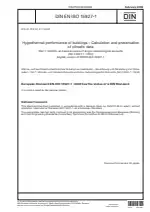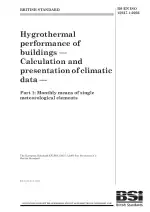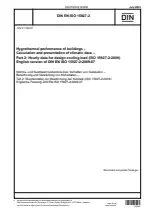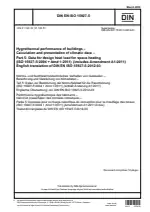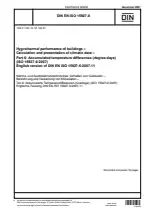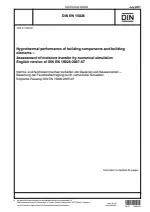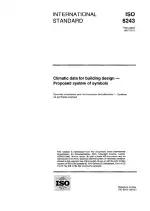Hygrothermal Performance of Buildings - Calculation and Presentation of Climatic Data - Part 1: Monthly and Annual Means of Single Meteorological Elements
Also Known As:
The DIN EN ISO 15927-1 standard is designed to provide guidelines for the calculation and presentation of climatic data related to the hygrothermal performance of buildings. It outlines the procedures required to assess and analyze the thermal and moisture aspects of buildings based on monthly and annual means of various meteorological elements.
The standard emphasizes the importance of obtaining accurate numerical values for specific locations from the meteorological service in the relevant country. This ensures that the climatic data used for calculations is precise and relevant to the specific region under consideration.
The standard focuses on six key single meteorological elements: air temperature, atmospheric humidity, wind speed, precipitation, solar radiation, and long wave radiation. These elements are crucial for understanding and evaluating the hygrothermal performance of buildings, as they directly impact the thermal comfort, heat transfer, and moisture conditions within a building envelope.
| Descriptors | Air temperatures, Brickwork, Buildings, Climate, Climatic loading, Climatic protection, Components, Construction, Construction engineering works, Damp-proofing, Data, Definitions, Heat engineering, Heat exchange, Humidity, Influence of climate, Masonry, Meteorology, Moisture, Precipitation, Precipitation (atmospheric), Ratings, Resistance to climatic conditions, Solar radiation, Thermal protection, Wind speed, Wind velocity |
| ICS Codes | 91.120.10 - Thermal insulation of buildings 91.120.30 - Waterproofing |
| Language(s) | English |
| File Size | 1.8 MB |

